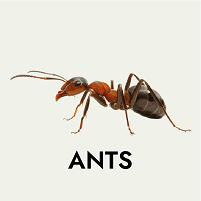- Best Pest Control & Disinfection services in UAE
- +971547473221
- [email protected]
Biological Information on most treated pests in UAE
As pest control professionals it is very important to know about the biology of pests. while inspecting we observe the life stage of pests and design pest control treatments and frequency. Cockroaches and bedbugs are major problems in Dubai. we would like to publish this information about these pests for awareness.
Cockroaches - Lifecycle
Cockroaches have a relatively simple anatomy, consisting of a head, thorax, and abdomen. They have six legs, two antennae, and two pairs of wings (although not all species can fly).
- Their thorax contains their legs and wings, and their abdomen contains their reproductive and digestive organs. roach’s heart contains 13 chambers.
- The life cycle of a cockroach includes three main stages: egg, nymph, and adult. Female cockroaches lay eggs in an ootheca protective case, which can contain anywhere from a few to several dozen eggs.
- After hatching, the young cockroaches, known as nymphs, go through several molts as they grow and develop.
- Nymphs resemble small versions of adults and go through several instar stages before reaching maturity.
- They have an exoskeleton, which provides protection and support for their bodies. Their heads contain their eyes, mouth, and antennae, which are used for sensing their environment.
- Once they reach adulthood, cockroaches are able to reproduce and the cycle begins again. The entire life cycle can take anywhere from a few months to a year, depending on the species of cockroach and environmental conditions.
Bed bugs and its Life cycle
Bed bugs are small, reddish-brown, flattened insects that are about the size of an apple seed. They belong to the Cimicidae insect family. they have six legs, two antennae, and a segmented body that is divided into three parts: the head, thorax, and abdomen.
- The common bed bug (Cimex lec- tularius) has five developmental life stages
- The head contains the eyes, mouthparts, and antennae. Their mouthparts are specifically adapted for piercing and sucking blood.
- The thorax contains the legs and wings (bed bugs are not able to fly).
- The abdomen contains their reproductive and digestive organs.
- Bed bugs have an exoskeleton that can swell after feeding, making them appear more elongated.
- The life cycle of a bed bug includes four main stages: egg, nymph, subadult, and adult. Female bed bugs lay eggs in small clusters, typically in crevices or other hidden locations.
- The eggs are white, about 1mm in length and take around 10 days to hatch.
- After hatching, the young bed bugs, known as nymphs, go through five molts as they grow and develop. Nymphs resemble small versions of adults and require a blood meal before each molt.
- The entire nymphal stage can take anywhere from 4-6 weeks, depending on the availability of food and temperature.
- Once the nymphs reach the subadult stage, they are almost fully grown but are not yet sexually mature. They will need one more blood meal before reaching adulthood.
- Once they reach adulthood, bed bugs are able to reproduce. Adult females can lay hundreds of eggs in their lifetime, and the cycle begins again. The entire life cycle can take anywhere from a few weeks to a few months, depending on environmental conditions.
- It’s worth noting that bed bugs are ectothermic which means that the rate of their life cycle is influenced by temperature. In optimal conditions, which is around 30°C (86°F) and 70-90% humidity, the life cycle can be completed in as little as a month while in lower temperatures it may take up to a year.
Pests we can help you with
Our team of professionals can handle all kinds of pest infestation and guide for proper removal. Our services are available across UAE, including the emirate of Dubai, Sharjah & Abu Dhabi.
See Signs of Pest Infestation?
If the answer is yes, then feel free to connect with us. Our Expert exterminators offers excellent pest control services across UAE.








